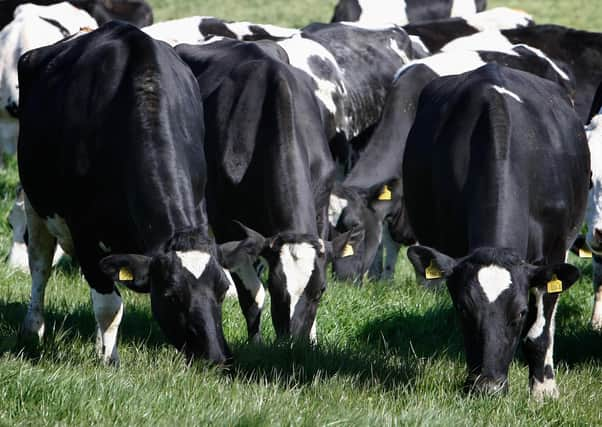Herd fertility and vaccination – challenges and perceptions


In periods of low milk price when cost of production is under review more frequently, vaccination programs are often scrutinized to determine if savings could be made.
Every farm has its own unique infectious disease status and risks to account for, and at times of low milk price it can be tempting to consider dropping out preventative vaccines. Often decisions regarding dropping vaccinations are made assuming a disease is no longer on the farm, given there is little obvious clinical evidence or without the local knowledge of an animal health professional regarding new or immediate disease risks within a locality.
Advertisement
Advertisement
Counter to this often vaccination is not taken up, having always tested positive for a disease for years without obvious clinical evidence of the disease being on farm. However many of these endemic viral diseases are likely to subtly rob your herd of reproductive efficiency. For example either directly through effects on the reproductive tract or indirectly through impaired growth in dairy heifers. We know that optimising reproduction and herd health is critical to future milk production and profitability, especially in times of low milk price. So decisions to stop or indeed start vaccination for viral or bacterial diseases that can impact herd fertility should be well considered with review from the wider farm team.
Many viral diseases are endemic and a major cause of financial loss to modern dairy farms. When considering dairy herd reproductive efficiency, various viruses within cattle have the ability to cross the placenta and cause abortion or foetal abnormalities and often these are the first episodes recognised on farm. Abortion can be an obvious example of viral disease on farm and although abortion rates on dairies are often quite low, their financial effects are easily quantified as depending on the timing of the abortion the dam is likely to exit the herd as a non pregnant cull.
However often endemic viral diseases can have subtle effects by reducing conception rates which may result in greater losses than many farms take into account. Some viruses can remain latent and reactivate around calving, likely in association with the metabolic stress of early lactation. Others have synergistic actions with other pathogens promoting immunosuppression and interruption of ovulation and embryo implantation and predispose animals to bacterial infections within the reproductive tract. Examples of these viruses include Bovine Viral Diarrhoea Virus (BVDV), Infectious Bovine Rhinotracheitis (IBR) and Leptospirosis, often seen as the “core” viral diseases for which farms test and if appropriate vaccinate for.
When considering vaccines as a tool on farm I encourage farmers to review their current herd health KPIs and to know their infectious disease status and risk today, not last year or two years ago on the last testing they performed. Infectious disease control is not often a decision to be made in isolation once every couple of years but a decision that should be under regular review. Regular screening for infectious disease and risk of disease entry is common place in progressive dairies and vaccination is often utilised as a preventative tool rather than as a tool to be used solely in the face of an outbreak. However farms should also be clear as to why they are utilising vaccination – as a preventative tool, as a means to eradicate a disease or as an aid to control endemic disease within the farm.
Advertisement
Advertisement
Perhaps you have made the decision to invest in a vaccination program this year, do take the time to ensure that you and your farm team handle it with care. Store and use the vaccine at the correct temperature, this includes ensuring it is delivered within a cool pack, if you are going to pick it up from your veterinary practice or agricultural store, bring one with you. If ordering your vaccine online, consider ordering at the start of the week to prevent potential delays in postage over a weekend. Make sure the farm fridge is working correctly, sadly there is recent evidence suggesting that over 60% of on farm fridges had been recorded at 0⁰C or below 0⁰C for long enough for vital contents to freeze, many were also unable to maintain temperatures below 8⁰C. When the temperature is too high, vaccines become ineffective. If frozen the vaccine is destroyed.
Consider how you will ensure the vaccine is kept at the correct temperature when you are vaccinating, over the course of the morning or afternoon. Use the vaccine at the right time, interval, dose and route and maintain good hygiene. Vaccine administration is made easier and safer for you and your herd if they are adequately restrained. We are privileged within agriculture to have a number of vaccinations available and ready to use on our farms to assist us in the control or prevention of infectious disease. Understanding your current herd disease status and establishing clarity in your goal of using a particular vaccine or alternative strategies is critical when considering either using, or dropping out vaccines.
I encourage you to have regular contact and discussion with your veterinary surgeon to understand risks of proposed approaches to infectious disease control on your farm and if you choose to invest in vaccination, invest in the time to ensure it is stored, used and recorded correctly.